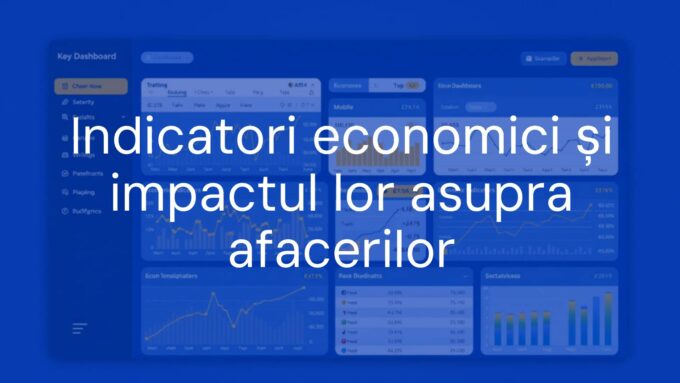The strategic planning process acts as the main guide for any organization, from international corporations to local small businesses. Without a clear direction and a structured plan, an organization can easily get lost in today’s fast-changing market, waste important resources, and miss key chances for growth. Just as a chess player needs a strong opening, a business needs a proper strategic planning process to achieve long-term success. This process is the foundation that helps the organization reach its goals.

Strategic planning connects all efforts within the organization, focusing them on shared goals. By setting a clear vision, defining goals, and creating measurable targets, this process turns ideas into practical steps. It bridges the gap between where the organization is and where it wants to be, answering key questions such as: Where are we now? Where do we want to go? How will we get there?
What is the Strategic Planning Process?
Strategic planning is a structured way for leaders to decide what they want their organization to achieve in the future. Unlike simply reacting to events as they occur, this process involves looking ahead, examining both internal strengths and weaknesses as well as outside trends to choose the best path forward. The aim is for everyone in the organization to work on the most important priorities, allowing the company to adjust as circumstances change and achieve its long-term aims.
Each step of the planning process helps set key long-term goals and achieve them using good management. The process is based on the organization’s vision, mission, and values and supported by information gathered from inside and outside the company. This process is ongoing, allowing updates and changes to keep the plan useful and effective.
The Difference Between Strategic Planning, Strategic Management, and Business Plans
Although these terms may sound similar, they have clear differences:
- Strategic Planning is about creating a plan, setting a direction, and deciding what the main goals should be for the next few years. It answers “what do we want to achieve?” and “why is it important?” The result is the strategic plan, which communicates what must be done to reach the goals.
- Strategic Management is a broader concept that includes strategic planning but also covers carrying out the strategy, using resources, monitoring progress, and making changes when needed. It keeps the plan active and creates ongoing feedback for better decision making.
- Business Plan is a more detailed, often shorter-term document usually used when starting a business or making big changes. It contains step-by-step plans, budgets, and specifics about how the business will operate, and is often used to attract investors. For an established business, a strategic plan is usually more relevant than a business plan.

Main Parts of a Strategic Plan
The most effective strategic plans include interconnected parts, each with its own job:
- Vision: The long-term goal; what the organization wants to become.
- Mission: The main purpose of the company; why it exists and who it serves.
- Values: The beliefs and principles that guide decisions and behaviors.
- Objectives: Measurable and clear targets that the organization aims to hit. These should be SMART (Specific, Measurable, Achievable, Relevant, Time-bound).
- Strategies: The overall approaches or plans for achieving the objectives.
- Tactics: Specific short-term actions and steps that help carry out the strategies.
Why is the Strategic Planning Process Important?
A strategic plan gives an organization direction, helps make better decisions, and makes sure resources aren’t wasted. Without it, organizations often end up working on projects that do not support their main objectives.
A good planning process helps organizations understand risks and spot opportunities. It brings everyone together to focus on the most important projects, sets clear goals based on solid evidence, and explains why decisions are made, supporting them with facts and data.
Benefits of Strategic Planning for Organizations
- Focus and Direction: Clearly defines what the organization is about and where it wants to go.
- Better Use of Resources: Makes sure resources are used for the highest impact activities.
- Proactive Decision Making: Encourages planning ahead rather than just reacting to problems.
- Alignment: Ensures all departments and teams are working towards the same goals.
- Improved Performance: Monitors progress through clear goals and metrics.
- Ability to Adjust: Keeps the organization ready to change plans if needed so that it can keep up with changes in the market.
Risks of Not Having a Clear Strategic Process
- Lack of Direction: Teams may lose focus and work in different directions.
- Bad Use of Resources: Time and money may be spent on activities with little value.
- Poor Decision Making: Leaders may act without analysis, leading to poor choices.
- Missed Opportunities: Without clear goals, organizations often fail to take advantage of market openings.
- Departments Working Alone: Teams may have conflicting aims, causing inefficiency.
- Increased Vulnerability: Being unprepared for outside threats like new competitors or changing regulations can harm the organization.

What are the Main Steps in the Strategic Planning Process?
The process usually follows a clear sequence of steps. These steps may vary slightly, but the core ideas remain:
-
Clarify Vision, Mission, and Values
The first step is to ensure everyone understands what the organization stands for, what it wants to achieve, and the principles it believes in. -
Analyze Internal and External Environment
Next, the organization looks closely at its own strengths and weaknesses (internal), and opportunities and threats in the market (external). Tools like SWOT analysis are useful here.- Internal Factors: Skills, resources, culture, and processes.
- External Factors: Market trends, competitors, technology, legal changes, and customer needs.
-
Set Strategic Priorities
This means deciding which goals are most important so resources are not spread too thin across too many projects. Priority categories may include:Category Example Critical Needs immediate attention, with serious impact if not accomplished Important Significant goals that support the organization long-term Desirable Helpful for growth, but not urgent -
Define Objectives and Key Performance Indicators (KPIs)
Give each priority a measurable target, and decide which metrics will track progress. For example, use the OKR method: set a main objective and 3-5 measurable key results for each one. -
Develop the Strategic Plan
Set out specific projects, responsibilities, deadlines, and resources. At this point, big ideas become real steps. -
Communicate and Put the Plan into Action
Share the plan with everyone in the organization, making sure all know their roles. Use management tools to track tasks and progress. -
Monitor, Review, and Update the Plan
Regularly check progress. If problems arise or the market changes, make changes to the plan as needed. Keep tracking both internal progress and outside factors.

What Methodologies and Models Can Guide Strategic Planning?
Many tools can help organizations create and carry out their strategic plan. Here are some widely used ones:
- Balanced Scorecard (BSC): Aligns daily operations with main goals in four areas: financial, customer, internal processes, and learning/growth. Strategic maps show how goals in these areas connect.
- SWOT Analysis: Lists strengths, weaknesses, opportunities, and threats to give a quick overview of an organization’s situation.
- OKR (Objectives and Key Results): Helps set clear, ambitious targets and track progress at every level.
- Scenario Planning: Prepares for several possible future outcomes, creating flexible plans that can change with different events.
- Porter’s Five Forces: Checks industry conditions by evaluating competitor rivalry, customer and supplier power, risk of new competitors, and risk from substitute products.
Common Challenges in Strategic Planning and How to Overcome Them
Strategic planning often faces obstacles such as:
- Plans Becoming Outdated: Rigid, once-a-year planning may not keep up with quick changes. Tip: review and update plans regularly. Stay flexible and track trends as they happen.
- Poor Implementation: Plans are made but not carried out. Tip: connect strategies to everyday work, set clear responsibilities, and hold regular check-ins.
- Lack of Real-time Data: Relying only on old information can lead to weak decisions. Tip: use analytic tools and technology for up-to-date information.
- No Feedback Loop: Failing to check what’s working and what’s not can stop improvement. Tip: Set up regular reviews, invite feedback, and adjust plans based on lessons learned.
Tips and Best Practices for an Effective Strategic Planning Process
- Keep Plans Flexible: Make sure they can be updated as things change. Review the plan regularly-quarterly, yearly, or more often for fast-changing industries.
- Include a Wide Range of People: Engage employees from all departments and levels for more insights and buy-in. A planning group of 5-10 key members is ideal.
- Write Everything Down and Communicate Clearly: Make sure everyone can access and understand the plan. Regular updates help keep people engaged and informed.
- Base Decisions on Data: Rely on facts rather than guesses. Use data analysis and technology, like artificial intelligence, to improve planning and track progress.
- Align Company Culture with the Plan: Ensure the strategy fits with the behavior and values of the organization, and involve employees in the planning process.
- Use Technology: Embrace digital tools and artificial intelligence to speed up planning, analyze large data sets, and adjust strategies quickly as conditions change.
Frequently Asked Questions about the Strategic Planning Process
When Should a Strategic Planning Process Start?
Begin strategic planning when the organization needs a clear direction, faces big changes, or wants to update its long-term goals. Most organizations refresh their strategic plan every three to five years or when big milestones are reached, strategies shift, or new markets are entered. Also, start the process if teams are not aligned or if the company feels “stuck.” Planning should take no longer than 90 days to finish.
What’s the Difference Between a Strategic Plan and a Business Plan?
- Strategic Plan: Company-wide, long-term (3-5 years), sets out the why and what of a business-vision, mission, major objectives, and main strategies.
- Business Plan: More detailed, shorter-term, used especially when launching a company or making big changes. It covers how the business will run day to day, including products, market analysis, operations, and budgets.
What Templates Can Be Used for Strategic Planning?
Templates make planning easier. Popular choices include:
- Balanced Scorecard templates
- SWOT analysis templates
- OKR templates
- Strategy map templates
- Action plan templates
You can find these templates online. Choose what fits your organization’s needs and complexity.
How Do I Choose Between SWOT, BSC, and OKR?
- SWOT: Best for understanding your starting point. Use it early to see strengths, weaknesses, opportunities, and threats.
- Balanced Scorecard: Best for connecting goals to daily work, especially if you want a broad overview across financial, customer, internal, and growth areas.
- OKR: Best for setting ambitious, measurable goals and breaking them down for teams or individuals. Use it when you want accountability and tracking at every level.
Many organizations combine these tools: for example, they might use SWOT to inform their BSC and then use OKRs to break down objectives for different teams.
Summary: The Strategic Planning Process in Short
Strategic planning is a must for any organization aiming for lasting success. It gives clear guidance for making choices, using resources wisely, and reaching shared goals. This process does not end with creating a plan – to make a difference, the plan should be carried out, tracked, and changed as needed. A planning cycle that is always running helps organizations stay competitive and ready for whatever happens next. By following best practices and using the right tools, companies can build a strong, flexible framework that leads them towards their mission and vision, even in uncertain times.












